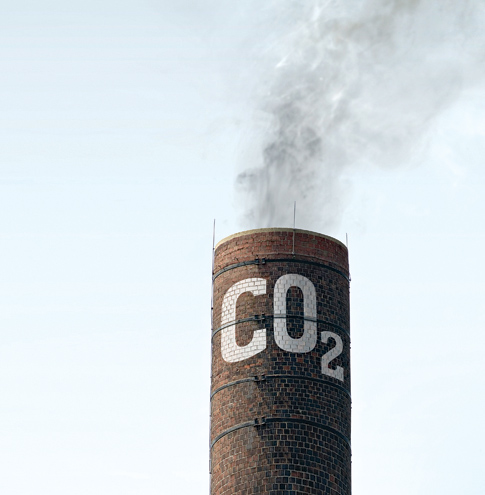

Power plants nationwide must cut their carbon dioxide pollution by up to 30 percent in less than two decades, under the “clean power plan” released today by the Obama administration.
It is the most sweeping CO2 reduction in the power sector ever mandated by the Environmental Protection Agency, and the biggest move to date by the administration in bypassing the gridlocked Congress to take direct action on global warming. Air pollutants linked to rising rates of lung and heart diseases would also decrease under the plan, although it doesn’t regulate them directly.
Gina McCarthy, head of the Environmental Protection Agency, formally announced the plan this morning before an upbeat Washington, D.C., audience of federal staffers and officials.
The new carbon rule doesn’t require specific reductions at individual power plants, or add them up via metric tons of CO2. Rather, it sets state-by-state requirements for reducing the power sector’s rate of “carbon intensity”: the amount of carbon pollution created per megawatt hour of generated electricity.
Each state has an interim goal for reducing carbon intensity between 2020-2029, based on its mix of power sources in 2012 (the most recent year for which full data are available), and a final goal for 2030 and afterwards. It is not clear what would happen if a state missed its goals. EPA used emissions data from 2005–a benchmark the U.S. has used as well at recent international climate talks–to estimate the overall reduction of 30 percent by 2030.
(Under the Kyoto climate agreement, which the U.S. never ratified, greenhouse gas emissions cuts were benchmarked at 1990 levels.)
In the rule, EPA identifies four “building blocks” for carbon-reduction strategies that are already being used by many states and utilities to reduce carbon emissions, including:
- Expanding both renewable and nuclear sources of energy, i.e. “no and low-emissions” sources
- Shifting from burning coal to less-dirty natural gas
- Supplier efficiency: Improving the equipment and processes at power plants to get the same energy generation from less fuel
- Demand efficiency: Lowering how much electricity end users need by increasing energy efficiency.
But McCarthy stressed today that the states will be in charge of tailoring their plans to their own particular conditions and needs. In fact, if observers could have taken a drink for every time McCarthy said word “flexibility,” everyone would have been buzzed by the end of her speech.
States may also collaborate to cut CO2 pollution under the rule. Connecticut, Delaware, Maine, Maryland, Massachusetts, New Hampshire, New York, Rhode Island, and Vermont are ahead of the game with their joint Regional Greenhouse Gas Initiative, formed in 2005 to create a market for carbon emission allowances, also called cap-and-trade. RGGI is credited with cutting the region’s carbon dioxide pollution by up to 40 percent, and lowering electricity bills after an initial spike. (New Jersey left RGGI in 2011.)
States not already in an emissions market can also look to California’s carbon cap-and-trade program, established in 2012 to help the state reach its goal of cutting greenhouse gas pollution to 1990 levels by 2020, and then another 80 percent beyond that by 2050.
‘This is not just about disappearing polar bears or melting ice caps. This is about protecting our health and our homes.’
McCarthy emphasized that the new rule confronts well-known threats to both public health and the economy, which are tied to power plant CO2 emissions and now made more complex by the impacts of global warming. “Rising temperatures bring more smog, more asthma, and longer allergy seasons. If your kid doesn’t use an inhaler, consider yourself a lucky parent,” said McCarthy, “because 1 in 10 children in the U.S. suffers from asthma. Carbon pollution from power plants comes packaged with other dangerous pollutants like particulate matter, nitrogen oxides, and sulfur dioxide, putting our families at even more risk.”
“This is not just about disappearing polar bears or melting ice caps. This is about protecting our health and our homes. This is about protecting local economies and jobs,” McCarthy said, and then added, off-script, “Although I like polar bears, and I know about melting ice caps.”
Taking aim at critics of regulating carbon emissions, McCarthy dismissed charges that the plan’s mandated cuts will cause power prices to skyrocket, or cripple industries like the automobile sector, as “empty allegations…the same tired play from the same special-interest playbook they’ve used for decades,” such as the creation of smog-reducing regulations in the 1960s, or curbs on pollutants causing acid rain in the 1990s.
“Time after time, when science pointed to health risks, special interests cried wolf,” said McCarthy. “And time after time, we followed the science, protected the American people, and the doomsday predictions never came true…[T]heir claims that the science-driven action that’s protected families for generations would somehow harm us flies in the face of history, and shows a lack of faith in American ingenuity and entrepreneurship.”
McCarthy’s sharp tone was of a piece with the Obama administration’s recent pugnacity in affirming the scientific evidence that carbon pollution created by human activities has destabilized the climate, and maintaining that taking action now to slow down global warming will bring near-immediate as well as long-term economic benefits.
In 2007, the Supreme Court upheld the EPA’s authority under the Clean Air Act to regulate CO2 emissions from power plants–a leading cause of human-propelled global warming—as long as the agency could affirm that the greenhouse gas was a threat to public health and welfare. EPA made just such an “endangerment finding” in 2009, and has used this power since then to tighten up auto fuel economy standards, as well as carbon regulations on new power plants and industrial facilities.

